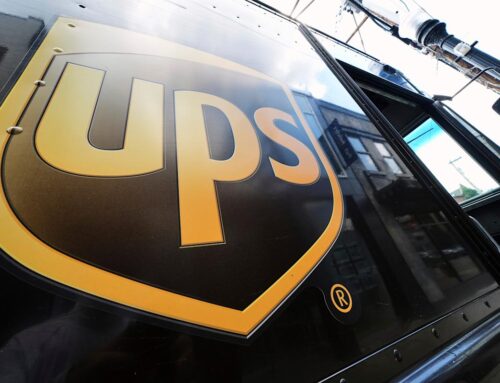What Amazon’s mass layoffs are really about
October 28, 2025
A version of this story will appear in CNN Business’ Nightcap newsletter. To get it in your inbox, sign up for free here.
New York
—
Amazon — a company that made more than $35 billion in profit in the first half of 2025 and is on track to spend more than $120 billion on AI this year — is laying off tens of thousands of people, citing its desire to slim down and “operate like the world’s largest startup.”
The overall message from Amazon reflected a familiar impulse in Corporate America to reduce headcount in the face of rising prices, an unpredictable trade war and a potential (though still largely speculative) artificial-intelligence revolution. Amazon isn’t alone: UPS on Tuesday announced it had cut some 48,000 workers this year; Target eliminated 1,800 corporate jobs last week “to be stronger, faster and better positioned” for the future, its new CEO said; and other spectacularly profitable tech players like Microsoft and Meta have also shed staff by the thousands recently.
But the impulse, which tends to please Wall Street in the short term, also amounts to a giant gamble on a technology that has yet to prove it can deliver the efficiencies its backers have long promised.
“I think we’re going to see a big trend where people are expecting a whole lot of this technology, and not everything we’re expecting will pan out,” said Sam Ransbotham, professor of business analytics at Boston College’s Carroll School of Management.
To be sure, Amazon appears to be cutting staff in anticipation of AI productivity gains, rather than in response to them. A spokesperson for the company said AI advancements were not responsible for the vast majority of the 14,000 cuts the company announced Tuesday. Although CEO Andy Jassy has warned about AI “agents” replacing workers, there is no indication that is happening yet.
But the company’s memo announcing the layoffs reiterated Jassy’s belief that AI is bound to transform the workplace.
“We need to remember is that the world is changing quickly,” the memo says, adding that “we’re convinced” that a leaner workforce is the key to leading in the AI era.
At the same time, Amazon, like other giant employers, is not immune to the uncertain business climate that has prompted other companies to put the brakes on hiring and look for ways to tighten their belts as they absorb the costs of tariffs and anxiously await a lasting US-China trade deal.
“There are probably many reasons behind a change in staffing and a change in workforce,” beyond just preparing for an AI-enabled future, Ransbotham said. And although AI tools are evolving, they also can be a convenient head-fake when other problems may be dogging a business.
These days companies are touting, and often overstating, their AI bona fides. A study released Tuesday by Indeed found that mentions of “AI” in job postings are rising, but about a quarter of them lack context about how AI would be used in the role, a trend known as AI-washing.
Similarly, management experts have raised doubts about the true impact of AI on layoffs.
“Very few companies are actually replacing people with AI right now,” Jessica Kriegel, chief strategy officer at executive advisory firm Culture Partners, told CNN. “What we’re seeing instead are preemptive layoffs … Leaders want the financial runway to explore how AI might drive efficiency, but the technology isn’t yet ready to take over most human roles.”
Despite tech companies’ promises about the capabilities of generative AI, the technology has frequently fallen short of its promoters’ lofty ambitions to streamline drudgery and free up humans to do more creative, fulfilling work. Increased adoption so far hasn’t translated to economy-upending productivity gains, but it has yielded an explosion of “workslop” – the gobbledygook some chatbots produce that have the look of real work without the substance that makes it valuable.
Chatbots are challenging the dominance of online search, and are often used to troubleshoot potential problems in computer code. But they are also prone to errors that can be hard to detect. Adoption has exploded since ChatGPT was released three years ago, but so, too, have stories of humans developing harmful relationships with chatbots.
Amazon, which is set to report quarterly earnings Thursday, didn’t indicate which teams would be affected by the cuts. Its stock was up just over 1% on Tuesday.
And while the cuts – which could eventually top 30,000, according to Reuters – are likely to please Wall Street in the short term by padding Amazon’s profit margins, such drastic staff reductions bring longer term risks and hidden costs, Kriegel said.
“Slimming down too early doesn’t make a company nimble; it makes it brittle,” she said. “The companies that will win this revolution aren’t the ones that automate the fastest. They’re the ones that stay adaptable enough to catch the system when it slips.”
Search
RECENT PRESS RELEASES
Related Post




